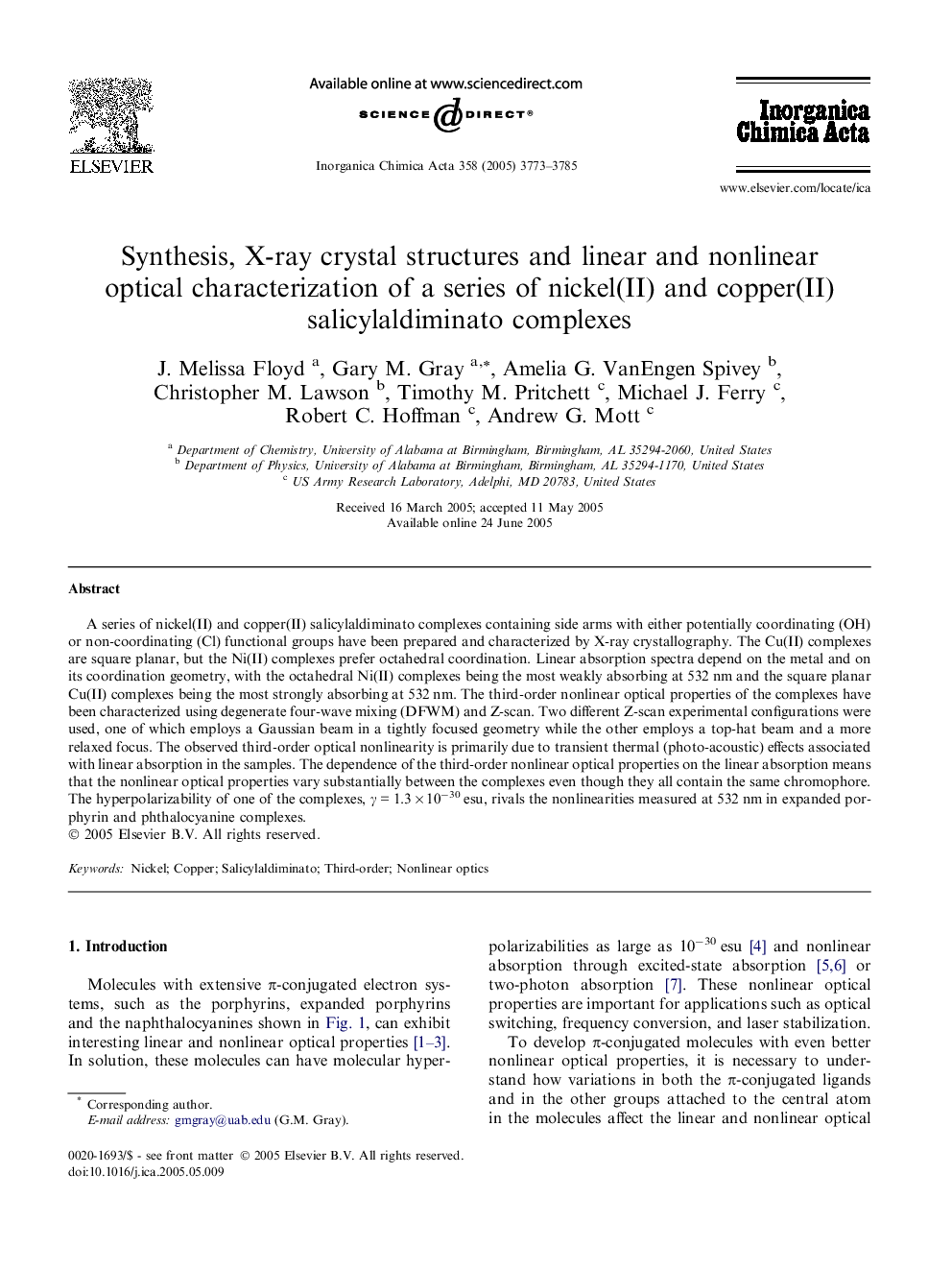| Article ID | Journal | Published Year | Pages | File Type |
|---|---|---|---|---|
| 1311824 | Inorganica Chimica Acta | 2005 | 13 Pages |
A series of nickel(II) and copper(II) salicylaldiminato complexes containing side arms with either potentially coordinating (OH) or non-coordinating (Cl) functional groups have been prepared and characterized by X-ray crystallography. The Cu(II) complexes are square planar, but the Ni(II) complexes prefer octahedral coordination. Linear absorption spectra depend on the metal and on its coordination geometry, with the octahedral Ni(II) complexes being the most weakly absorbing at 532 nm and the square planar Cu(II) complexes being the most strongly absorbing at 532 nm. The third-order nonlinear optical properties of the complexes have been characterized using degenerate four-wave mixing (DFWM) and Z-scan. Two different Z-scan experimental configurations were used, one of which employs a Gaussian beam in a tightly focused geometry while the other employs a top-hat beam and a more relaxed focus. The observed third-order optical nonlinearity is primarily due to transient thermal (photo-acoustic) effects associated with linear absorption in the samples. The dependence of the third-order nonlinear optical properties on the linear absorption means that the nonlinear optical properties vary substantially between the complexes even though they all contain the same chromophore. The hyperpolarizability of one of the complexes, γ = 1.3 × 10−30 esu, rivals the nonlinearities measured at 532 nm in expanded porphyrin and phthalocyanine complexes.
Graphical abstractComplexes of the types shown below have been synthesized and characterized by X-ray crystallography, UV–Vis spectroscopy and third-order nonlinear optical techniques (degenerate four-wave mixing and Z-scan). These studies demonstrate that the third-order optical nonlinearities depend on both on the nature of the metal center and its coordination environment (octahedral versus square planar).Figure optionsDownload full-size imageDownload as PowerPoint slide
